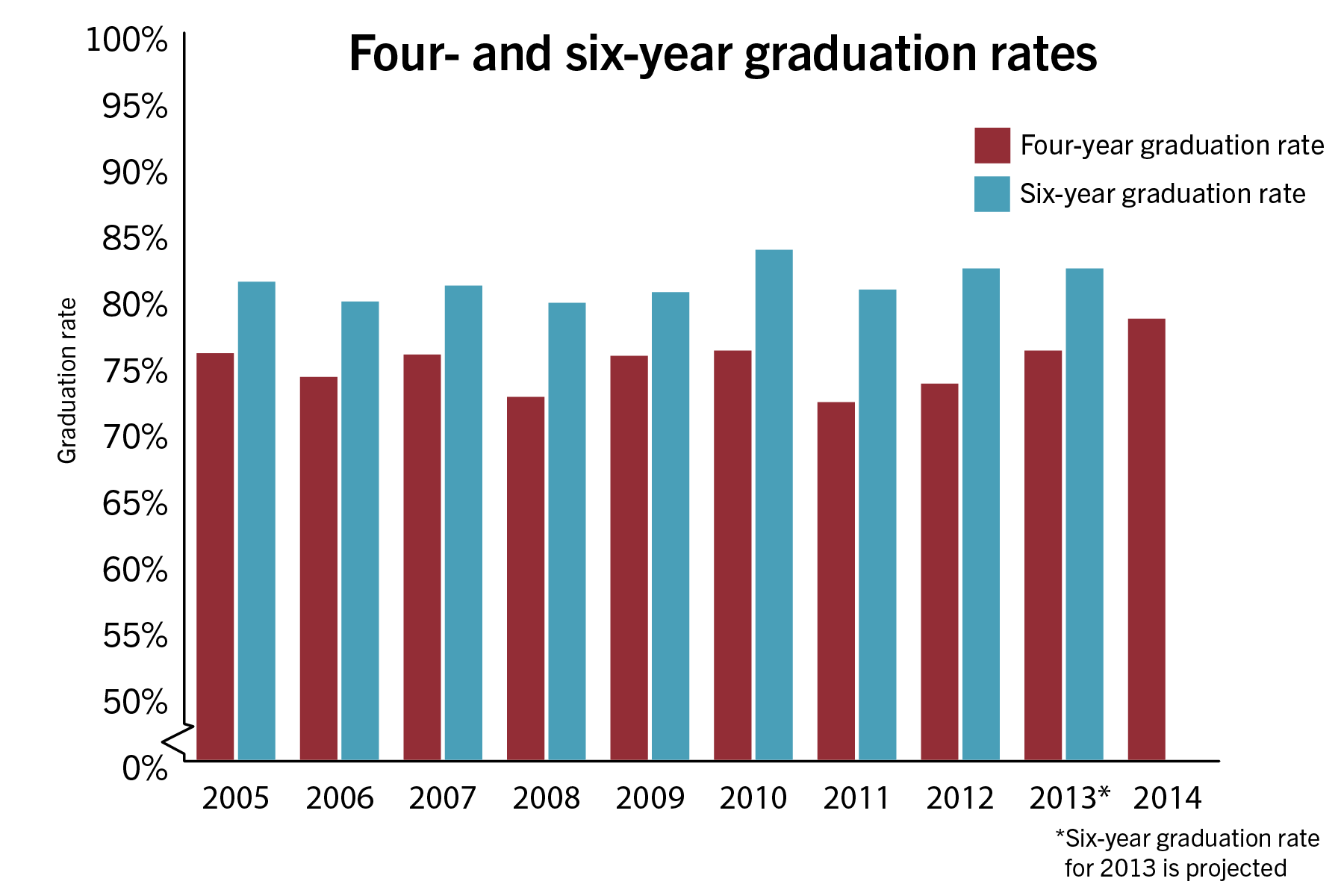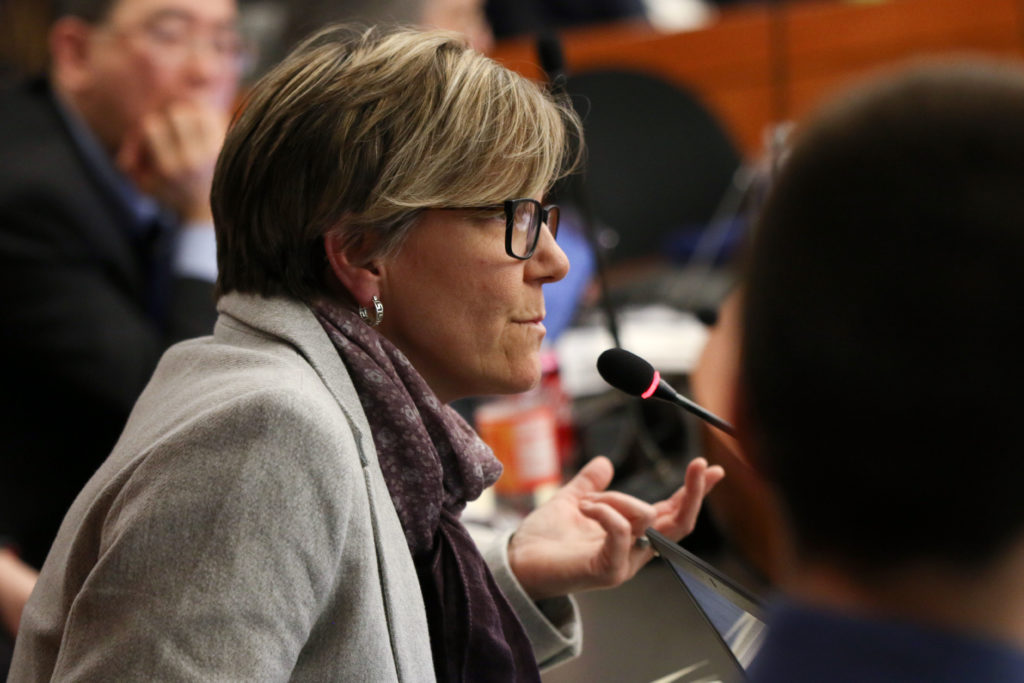More students are graduating in four years than ever before.
The four-year graduation rate hit an all-time high for the Class of 2018, clocking in at 78.3 percent last year, Provost Forrest Maltzman told the Faculty Senate Friday. Officials and experts said a long-term increase in graduation rates is reflective of institutional changes, like improvements to financial aid systems or dining plans, that have helped better student satisfaction.
Maltzman told the Faculty Senate that the University has made “unbelievable” progress toward improving the graduation rate even though officials would like the percentage to surpass 80 percent. He said officials have taken steps in recent years to improve different aspects of the student experience, including food insecurity and financial aid services.
He added that the creation of the Enrollment Retention Office in 2016 and the reconfiguration of the student affairs office in 2018 also helped produce “great” results and contributed to the improved graduation rate.
“We’re not developing programs and saying, ‘Let’s aim for the Class of 2017 to get them to stay,’” he said. “We’re saying, ‘What can we do to enhance student experience? What can we do to make sure that students don’t get frustrated when they try to take a program?’”

Olivia Columbus | Hatchet Designer
Source: Annual Report on Core Indicators
Maltzman said positive trends in four-year graduation rates are also reflected in six-year graduation rates. Last year, GW’s six-year graduation rate reached 82 percent, and he said he anticipates an upward trajectory going forward.
But both GW’s four- and six-year graduation rates have clocked in on the lower ends of its peer institutions. For the Class of 2017, the most recent year for which data is available from the National Center for Education Statistics, at least six of the University’s 12 peers have had a higher four-year graduation rate, while eight have had better six-year data.
Laurie Koehler, the senior vice provost for enrollment and the student experience, said officials have focused both on “the macro and the micro.” She said administrators have honed efforts to reach out individually to students who are close to graduating and have also implemented long-term initiatives to improve student satisfaction.
Since University President Thomas LeBlanc arrived on campus, officials have created a new Board of Trustees task force on the student experience, merged the student affairs and enrollment offices into one department and overhauled the long-criticized student dining plan.
Jennifer Steele, an associate professor of education at American University, said many factors, including more academic support services and financial aid, could contribute to the four-year graduation rate increase. She said the jump in both areas should be “encouraging” for officials, but the four-year rate increase is the more “compelling” of the two numbers.
“That is what share of students make it through in the time that they probably anticipate when they start and for the budget that they probably anticipate when they start,” she said.
She said the positive trend in GW’s graduation rates over time shows this year’s increase is not “just a one-year fluke.”
“A one-year change is never as meaningful as a two- or three- or five-year change,” she said. “The longer the trend is established, the more that we can say it’s a meaningful trend, but it’s very exciting to hear the graduation rates moving in the direction that we would want.”
Tania LaViolet, the senior program manager of the College Excellence Program at the Aspen Institute, a nonprofit think tank, said four-year graduation rates affect “affordability and value” for students. She said a lack of access to financial aid can prevent students from graduating on time.
“When students experience delays in graduating, it can be costly – either because they are paying tuition for courses they didn’t necessarily need to graduate and because they are deferring wages in a labor market that values bachelor’s degrees,” she said in an email.
Paul Marthers, the vice provost for enrollment management and the interim vice president of campus life at Emory University, said his university has improved academic advising and restructured its student affairs office to help boost graduation rates.
“People recognize that the graduation rate is an indicator of the quality of the institution,” he said. “Certainly, parents and students who are going to pay 70-plus thousand dollars a year to send their son or daughter to college care deeply about what that university or college will do to help their student be successful all the way through those four years.”





